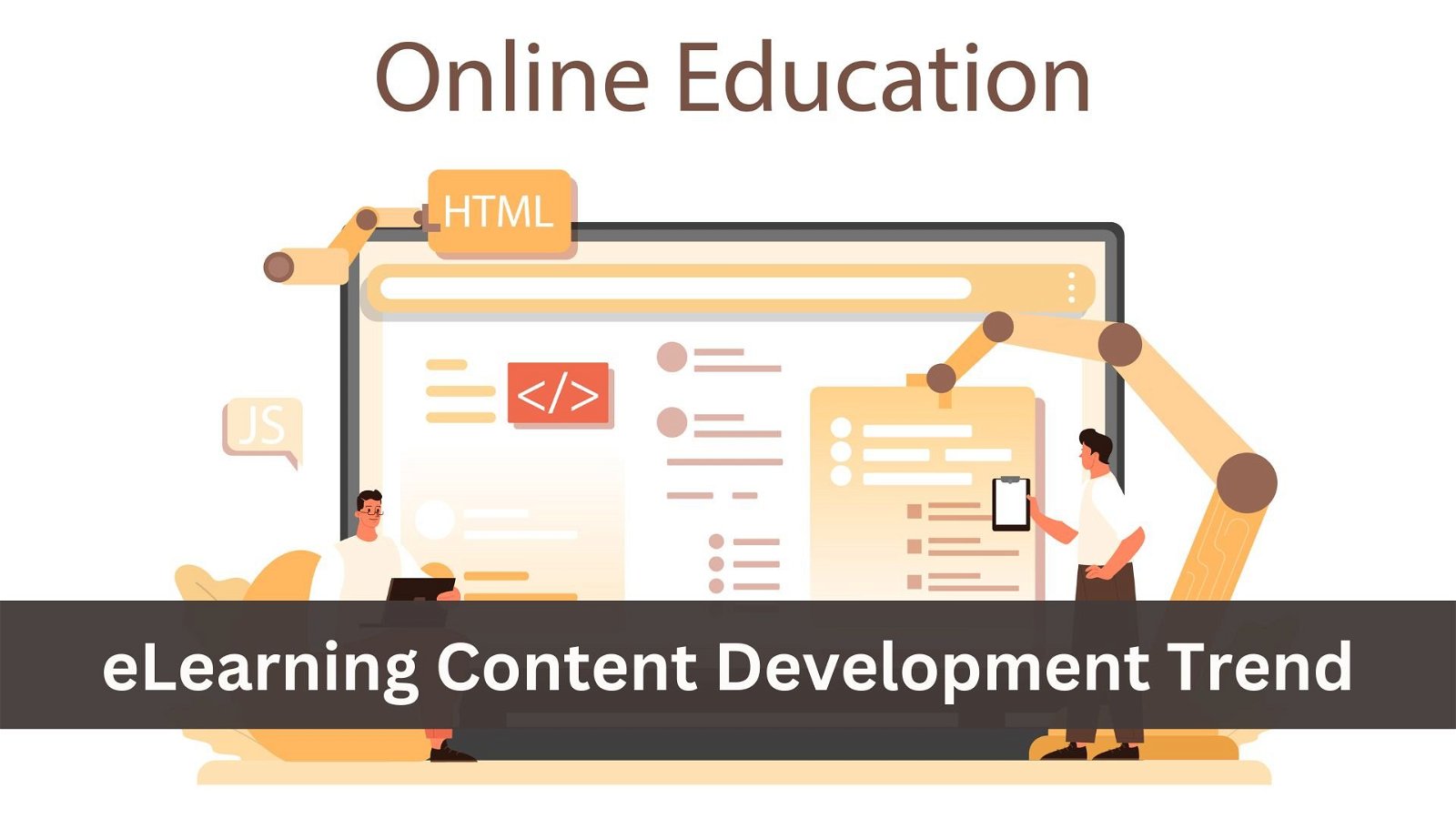Educational landscapes are rapidly evolving, driven by technological advancements and changing learner preferences. In the realm of eLearning content development, staying ahead of the curve is crucial for creating engaging and effective learning experiences.
eLearning content development refers to the systematic process of creating educational materials and resources for digital platforms. In the context of online learning, this encompasses the design, planning, and production of interactive and engaging content tailored for electronic delivery. The goal is to facilitate effective learning experiences by leveraging various multimedia elements, such as text, graphics, videos, simulations, and interactive assessments. Content developers, often working closely with instructional designers, educators, and subject matter experts, aim to craft materials that not only convey information effectively but also cater to diverse learning styles. The development process involves considering the latest educational technologies, pedagogical approaches, and learner needs to create dynamic and accessible digital learning content.
Table of Contents
ToggleWhy a Good E-Learning content is important?
A well-crafted eLearning content holds paramount importance in the realm of eLearning for several compelling reasons. Firstly, it serves as the backbone of a meaningful and effective learning experience. A meticulously developed eLearning module has the potential to captivate learners’ attention, promote engagement, and facilitate a deeper understanding of the subject matter. Quality eLearning content is designed not only to impart knowledge but also to cater to diverse learning styles, ensuring that learners with varying preferences and abilities can grasp and retain information effectively.
Also Read: The Ultimate Guide to Setting Up a bbPress Forum: Enhance Your WordPress Community
Top Trends For Your eLearning Content
In an era where numerous companies and individuals are directing their resources towards content development, staying abreast of key eLearning trends becomes imperative. This awareness not only guarantees learner engagement but also ensures the delivery of valuable content. For those not well-versed in Instructional Design, it’s essential to grasp the fundamentals of eLearning content development first. This lays the groundwork for understanding how to keep learners engaged and deliver impactful educational content within your program.
1. Microlearning
The popularity of short, focused, and easily digestible content is on the rise, and microlearning is at the forefront of this trend. Microlearning is a teaching method that involves delivering information in small, specific chunks, making it highly convenient for learners to consume and retain knowledge. This approach recognizes the modern learner’s preference for quick, targeted learning experiences that fit into busy schedules. By breaking down complex topics into bite-sized segments, microlearning not only enhances understanding but also accommodates diverse learning styles. As the demand for efficient and accessible education continues to grow, microlearning proves to be a valuable strategy for delivering impactful and memorable learning experiences.
2. Personalization
By tailoring content to the unique needs and learning styles of each student, the engagement and effectiveness of the learning experience are significantly enhanced. This method recognizes that every learner is distinct, with varying strengths, weaknesses, and preferences. Utilizing technology and data-driven insights, adaptive eLearning platforms can dynamically adjust the learning journey for each individual, ensuring that the content is not only relevant but also presented in a manner that resonates with the learner. As a result, personalized learning not only fosters a more engaging educational environment but also maximizes the overall effectiveness of the learning process by catering to the specific requirements of each student.
3. Mobile Learning
As the prevalence of smartphones and tablets continues to rise, eLearning content is increasingly tailored for optimal use on mobile devices. Responsive design and mobile interfaces provide on-the-go access, ensuring a seamless, accessible learning experience for students anytime, anywhere.
4. Gamification
The integration of game elements, including badges, points, and levels, into educational content is a deliberate approach aimed at elevating engagement and motivation levels among learners. By infusing elements commonly associated with gaming into the learning experience, educators create an environment that is not only informative but also enjoyable. Badges serve as tangible representations of achievements, points act as markers of progress, and levels provide a sense of advancement, collectively contributing to a more dynamic and interactive learning atmosphere.
5. Video-Based Learning
The utilization of videos for instructional content is experiencing a significant surge in popularity. Short instructional videos, tutorials, and interactive video content have become pivotal in delivering an engaging and highly effective learning experience. This trend reflects a recognition of the dynamic nature of contemporary education, where visual and interactive elements play a crucial role in capturing learners’ attention and facilitating understanding. Videos offer a versatile platform that accommodates various learning styles, providing educators with a powerful tool to communicate complex concepts in a concise and accessible manner.
Video-based learning, evolving with technology, enhances engagement and effectiveness, shaping the future of education’s instructional landscape.
6. Social Learning
The incorporation of social features into eLearning platforms is becoming increasingly prevalent, fostering collaboration and knowledge sharing among learners. Features such as discussion forums, social media integration, and collaborative projects work together to cultivate a sense of community within the digital learning environment. These interactive elements not only facilitate engagement but also create opportunities for learners to actively participate in discussions, share insights, and collaborate on projects. As education becomes more interconnected, the integration of social components within eLearning platforms serves as a catalyst for building a supportive and collaborative online learning community.
7. Interactive Assessments
Departing from conventional assessment methods, there is a distinct shift towards interactive and scenario-based evaluations in the realm of education. The emphasis is now placed on assessments that go beyond rote memorization, incorporating simulations and real-world scenarios. These dynamic assessment approaches are designed to enable learners to apply their knowledge and skills in practical situations, mirroring the complexities of the real world. By immersing students in scenarios that require critical thinking and problem-solving, educators aim to assess not only the retention of information but also the ability to synthesize and apply that knowledge in relevant contexts.
8. Data Analytics and Learning Analytics
Learning analytics, driven by data, empower educators to optimize eLearning effectiveness through valuable insights into learner behavior. Systematic analysis of patterns reveals how learners engage, helping educators identify strengths and address potential challenges in eLearning. By harnessing a data-driven approach, instructors can customize teaching, refine content delivery, and implement interventions, optimizing eLearning for individual needs.
9. Authoring Tools
Authoring tools play a pivotal role in the dynamic landscape of eLearning content development. These specialized software applications empower instructional designers and educators to create engaging and interactive digital learning materials. With features ranging from multimedia integration to drag-and-drop functionality, authoring tools simplify the process of content creation, making it accessible to a wider audience. These tools often provide templates, themes, and customization options, allowing for the development of visually appealing and pedagogically effective eLearning content.
Also Read: LearnDash LearnMate vs BuddyBoss LMS Theme
E-Learning Platform to Convert Your Content into E-Learning Courses

The integration of e-learning platforms with WordPress has revolutionized the process of converting content into dynamic e-learning courses. This seamless combination empowers content creators and educators to leverage the versatility of WordPress alongside specialized e-learning tools. By utilizing these platforms, users can efficiently transform their existing content, whether it be text, images, or multimedia, into engaging and interactive courses. The integration with WordPress provides a familiar and user-friendly environment, allowing for the easy management and customization of e-learning content. This synergy not only enhances accessibility but also offers a robust solution for individuals and organizations looking to establish an effective online learning presence without the need for extensive technical expertise.
LearnDash stands out as a robust and versatile plugin, serving as a cornerstone for building a comprehensive eLearning platform. Renowned for its powerful features and user-friendly interface, LearnDash enables educators and content creators to structure and deliver engaging online courses efficiently. Its flexibility allows for the seamless integration of various multimedia elements, quizzes, and assessments, catering to diverse learning styles.
To complement the capabilities of LearnDash, the LearnMate LearnDash theme emerges as an essential companion. This theme is specifically designed to enhance the visual appeal and functionality of LearnDash-powered eLearning websites on the WordPress platform. LearnMate brings a blend of aesthetic customization and intuitive design, ensuring a seamless and engaging user experience. With its responsive layout, the LearnMate LearnDash theme optimizes the eLearning platform for users across different devices, fostering accessibility and convenience.
Wrapping Up: eLearning Content Development Trend
In the rapidly evolving landscape of eLearning content development, staying ahead is essential for creating engaging and effective learning experiences. The process involves systematically creating digital educational materials tailored to diverse learning styles. Well-crafted eLearning content is crucial for capturing attention and facilitating a deeper understanding of the subject.
Key trends in eLearning include microlearning, personalization, mobile learning, gamification, video-based learning, social learning, interactive assessments, and data analytics. These trends reflect a commitment to creating dynamic and effective learning experiences for modern learners.
Interesting Reads:
Mastering SEO and Content Trends 2024 Blueprint
How To Set Custom Labels In LearnDash
Revolutionizing WordPress Content: Explore The Power of If-So, The Dynamic Content Plugin







